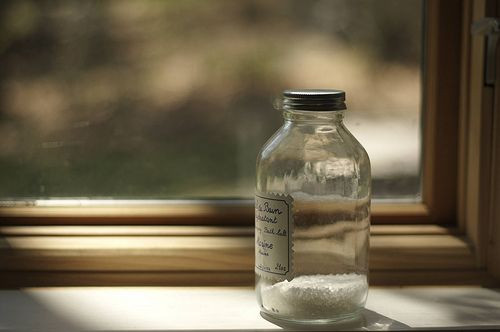Bath Salts Caused 23,000 ER Visits In 2011; 67% Linked To Other Drug Use

A new report has quantified the already confirmed danger of “bath salts” — synthetic street drugs that have been found, in lab tests, to be 10 times more addictive than crystal meth (methamphetamine) — as the drug caused nearly 23,000 emergency room visits in 2011 alone.
The Substance Abuse and Mental Health Services Administration (SAMHSA) released its report Tuesday that found an estimated 22,904 ER visits were caused by bath salts. The report is the first national analysis to track bath salt use to emergency room visits since the drug emerged a few years ago. The drug has recently been banned in New York State due to its dangerous and highly addictive effects as a stimulant and popular club drug. Between 2010 and 2011, calls to poison control centers increased 20-fold, according to White House data.
“Although bath salts drugs are sometimes claimed to be ‘legal highs’ or are promoted with labels to mask their real purpose, they can be extremely dangerous when used,” said Dr. Elinore McCance-Katz, SAMHSA’s chief medical officer, in a press release. “Bath salts drugs can cause heart problems, high blood pressure, seizures, addiction, suicidal thoughts, psychosis and, in some cases, death – especially when combined with the use of other drugs.”
A full 67 percent of hospital visits resulting from bath salt use showed supplemental use with another drug. Fifteen percent of cases involved use with marijuana or a synthetic version of the drug, and only 33 percent of visits were the result of abusing solely bath salts.
Derived from cathinone, a compound originally found in the Arabian and African plant khat, bath salts are stimulants that activate the pleasure centers in a person’s brain much in the same way as crystal meth or cocaine, but with incredibly more addictive effects. The main chemical compound in bath salts, methylenedioxypyrovalerone (MDPV), is responsible for the severe drug-seeking behavior.
One study from the Scripps Research Institute found lab rats pressed a lever to administer MDPV up to 600 times just for one “fix.” Researchers also tested for drug-seeking behavior with respect to crystal meth. The most that any rat pressed the lever for a fix of crystal meth was 60 times.
"We observed that rats will press a lever more often to get a single infusion of MPDV than they will for meth, across a fairly wide dose range," said senior author Professor Michael Taffe, a neuroscientist at Scripps. "Some rats would even emit 3,000 lever presses for a single hit of MDPV."
In 2011, there were 2.5 million ER visits in the United States as a result of drug abuse. The number of calls related to bath salt exposure, according to the American Association of Poison Control Centers, jumped from 304 in 2010 to 6,138 in 2011. Bath salts rose in prevalence in part because of discrete packaging and Internet sales. Despite having no relation whatsoever to actual bath salts, which can be used for therapeutic effects in the bath tub, the perceived — and surreptitious — similarities made illegal overseas shipment much easier.
“It’s a cat-and-mouse game that these retailers are using,” John R. Scherbenske, chief of Synthetic Drugs and Chemicals Section of the Drug Enforcement Agency, told CNN. “There is an underground market that know exactly how to abuse that product to get high.”
Published by Medicaldaily.com



























